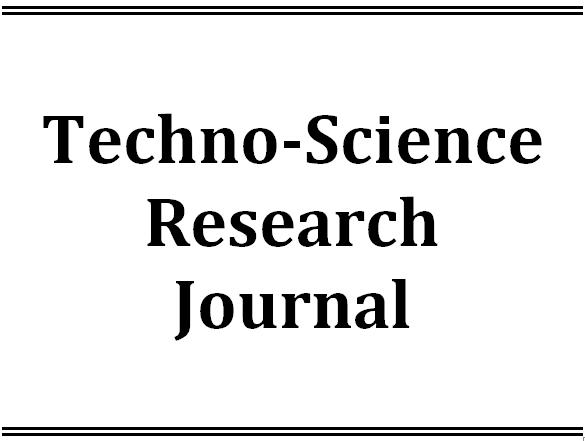Latest Issue
Empowering Education with Online Khmer Handwritten Text Recognition for Teaching and Learning Assistance
Published: August 30,2025Undergraduate Student Dropout Prediction with Class Balancing Techniques
Published: August 30,2025Status of Seawater Quality at Koh Rong Island, Sihanoukville, Cambodia
Published: August 30,2025Low-Complexity Detection of Primary Synchronization Signal for 5G New Radio Terrestrial Cellular System
Published: August 30,2025Word Spotting on Khmer Printed Documents
Published: August 30,2025Tuning Hyperparameters Learning Rate and Gamma in Gym Environment Inverted Pendulum
Published: August 30,2025Examining Passenger Loyalty in Phnom Penh Public Bus System: A Structural Equation Modelling Approach
Published: August 30,2025Prediction on Load model for future load profile of Electric Vehicle charging demand in Phnom Penh
Published: August 30,2025Economic Study on Integrating PV-DG with Grid-Tie: Case Study in Cambodia
Published: August 30,2025MINERALOGICAL CHARACTERISTICS OF THE SIDOMULYO ZEOLITE AND THE KEDUNGBEDAH BENTONITE, GUNUNGKIDUL REGENCY AND BOYOLALI REGENCY, RESPECTIVELY, INDONESIA AND THEIR UTILIZATIONS AS HEAVY METAL ADSORBENTS
-
1. ITC
Academic Editor:
Received: January 21,2024 / Revised: / Accepted: January 21,2024 / Available online: June 01,2016
The Sidomulyo zeolitic and Kedungbedah bentonitic tuffs are respectively located in the Gunungkidul and the Boyolali regencies, Indonesia. The study of their mineralogical characteristics was primarily done. The petrographical analysis indicates that the Sidomulyo zeolitic or Kedungbedah bentonitic tuffs is composed of volcanic glass, quartz, plagioclase, and altered minerals. The XRD investigation reveals that the zeolite tuff contains clinoptilolite, mordenite, montmorillonite, plagioclase, quartz, and orthoclase whereas the bentonitic tuff contains montmorillonite, clinoptilolite, illite, dickite, and quartz. The SEM observation of zeolitic tuff displays the presence of clinoptilolite in tabular structure and mordenite in fibrous structure and that of bentonitic tuff mostly presents montmorillonite in webby structure. The activated ion-exchange capacity of the Sidomulyo zeolitic and Kedungbedah bentonitic tuffs are
65.30 mgr.eq.Na2O/100 gram zeolite and 37.6 mg.eq.Na2O/100 gram. The zeolitic tuff dominantly contains clinoptilolite whereas the bentonitic tuff mostly consists of montmorillonite.
Due to their porous structure, the zeolite and bentonite are effectively used as heavy-metal adsorbents: 10g of zeolite in a solution of 250ml can adsorb about 9.80ppm of Cu(II), 10.5ppm of Cr(VI), and 11ppm of Ni(II) and 2.5g of bentonite of a solution of 25ml can adsorb 98% of Cu, 97.2% of Co, 96.8% of Ni, 98.3% of Zn.

